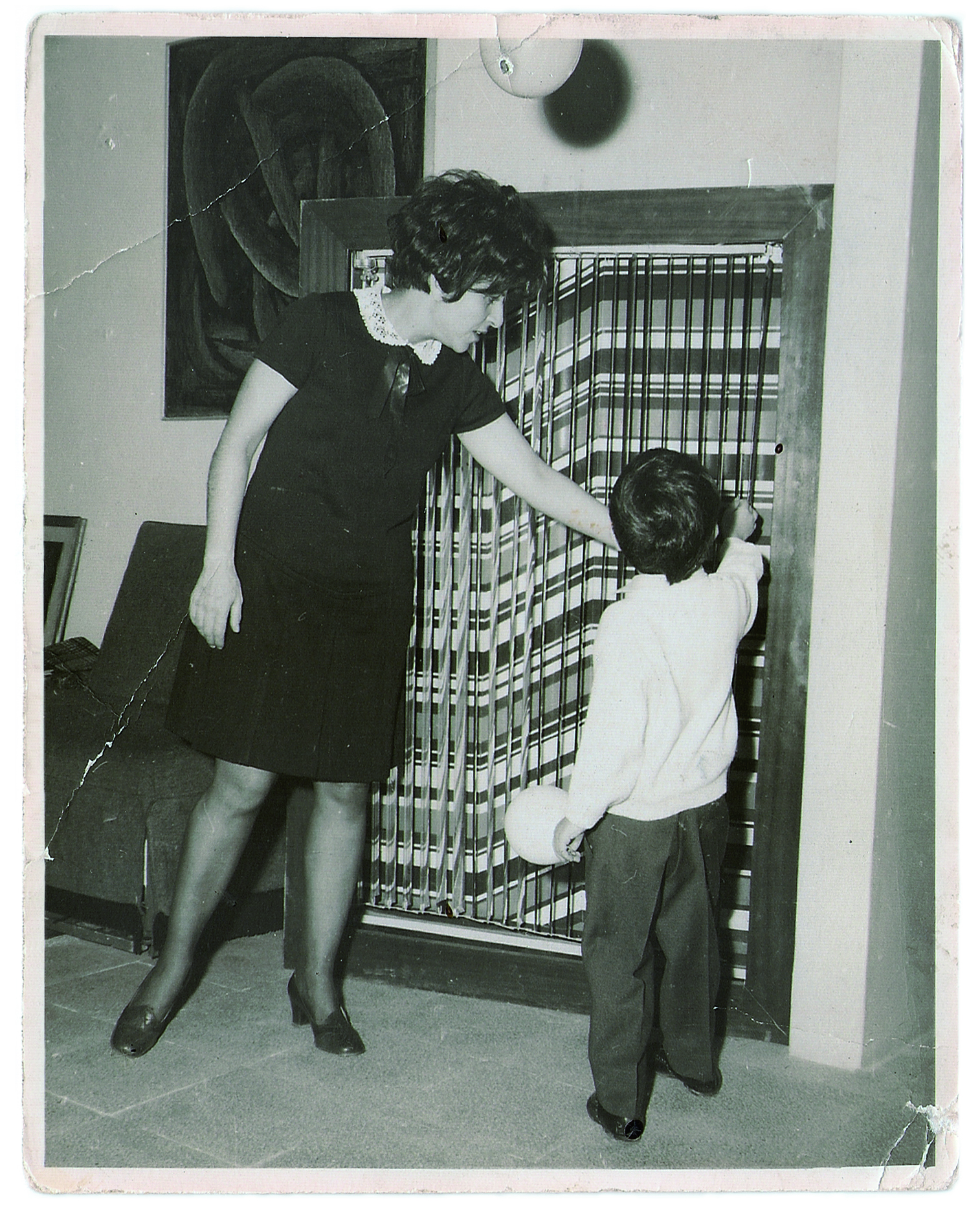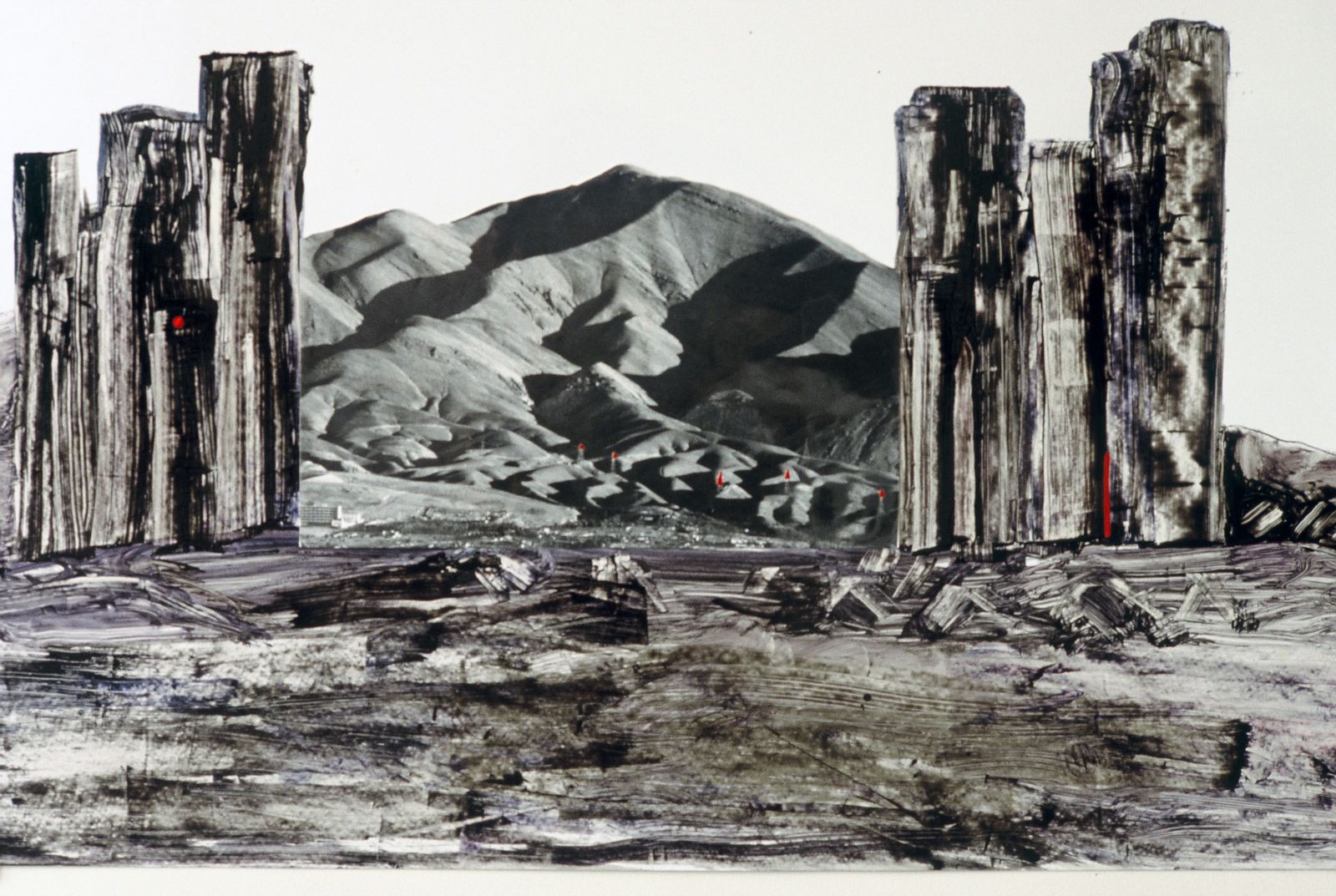
© Behjat Sadr explaining the functioning of a kinetic work to a child intrigued by the blinds, Tehran, 1967 - courtesy collection Mitra Hananeh-Goberville
Expositions du 22/1/2016 au 12/2/2016 Terminé
Ab/Anbar Gallery No.2 Roshanmanesh alley Khaghani St. Enghelab St. Darvazeh Dolat Teheran Iran
Ab/Anbar Gallery No.2 Roshanmanesh alley Khaghani St. Enghelab St. Darvazeh Dolat Teheran Iran
Ab/Anbar announces Behjat Sadr: Trace through the Black, a comprehensive solo exhibition spanning over four decades of the renowned Iranian modernist painter's oeuvre, which will take place at both Ab/Anbar and Aria galleries.
Behjat Sadr: Trace through the Black explores her artistic and intellectual heritage, with archival material, and presenting a rare selection of masterpieces: from her early debate with "abstraction informelle" in the 1950s; to her experimentations around organic forms, trace making, and hallucinatory networks of lines throughout the 1960s and 1970s; up until her "collage" years throughout the (inner) exile and the irrepressible return to her world of futuristic nostalgia.

© Behjat Sadr in her studio, Tehran, 1967 - courtesy collection Mitra Hananeh-Goberville
Sadr is regarded as one of Iran's most influential and radical Modern painters, due to her abstract paintings of paradoxical traces that blend luxuriant nature with the sharp-edged industrial. Sadr developed this signatory language in the 1950s, bringing together European Modernism and a modernity in Iran. A pioneer of the visual arts in Iran, she was one of the first women artists and professors to appear on the international biennial scene in the early 1960s. Sadr offers the singular testimony of a nascent cosmopolitan modernity that emerged in Tehran, Rome and Paris, in cities where she studied and exhibited, embodying an extraordinary fusion of work and life.
© Behjat Sadr, 1989, oil and collage on paper, 70 x 100, private collection - All images courtesy collection Mitra Hananeh-Goberville
The influence and legacy of Behjat Sadr as artist, teacher and pioneer of women's art in Iran and internationally, is a result of her commitment to introducing new ideas to painting through her impressionist-gestural approaches. An approach which led to creating canvases with serene or violent marks on surfaces that allowed for an exploration between the artist's body and its movement around the surrounding floor space. This performative approach to painting was one she described as "an uncontrollable urge to put her canvases on the floor allowing for the making of larger moves, and offering a greater control over gestures."
An extended edition in Farsi of the publication Behjat Sadr: Traces (Zamân Books) will be available for sale during the opening of the exhibition.



